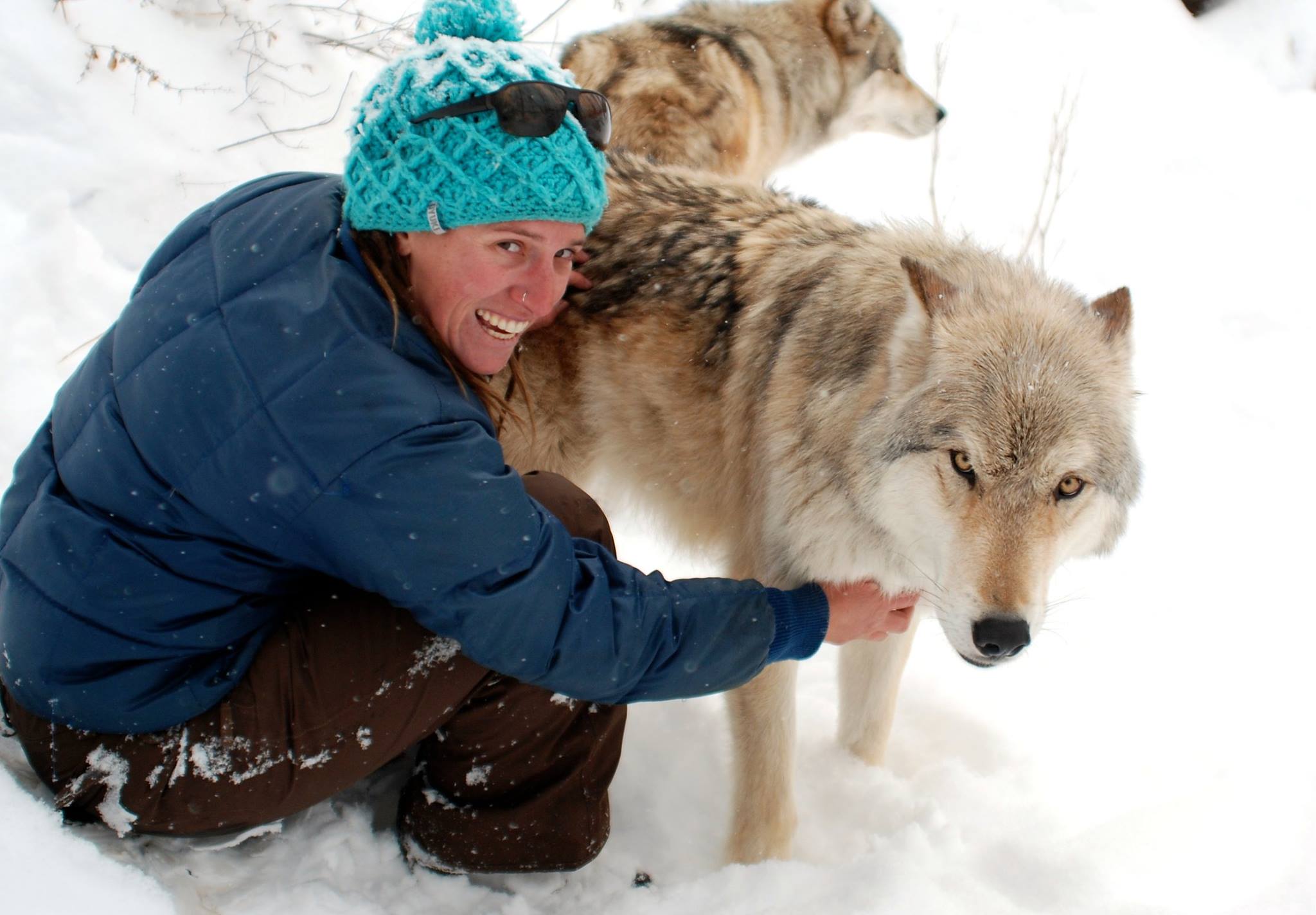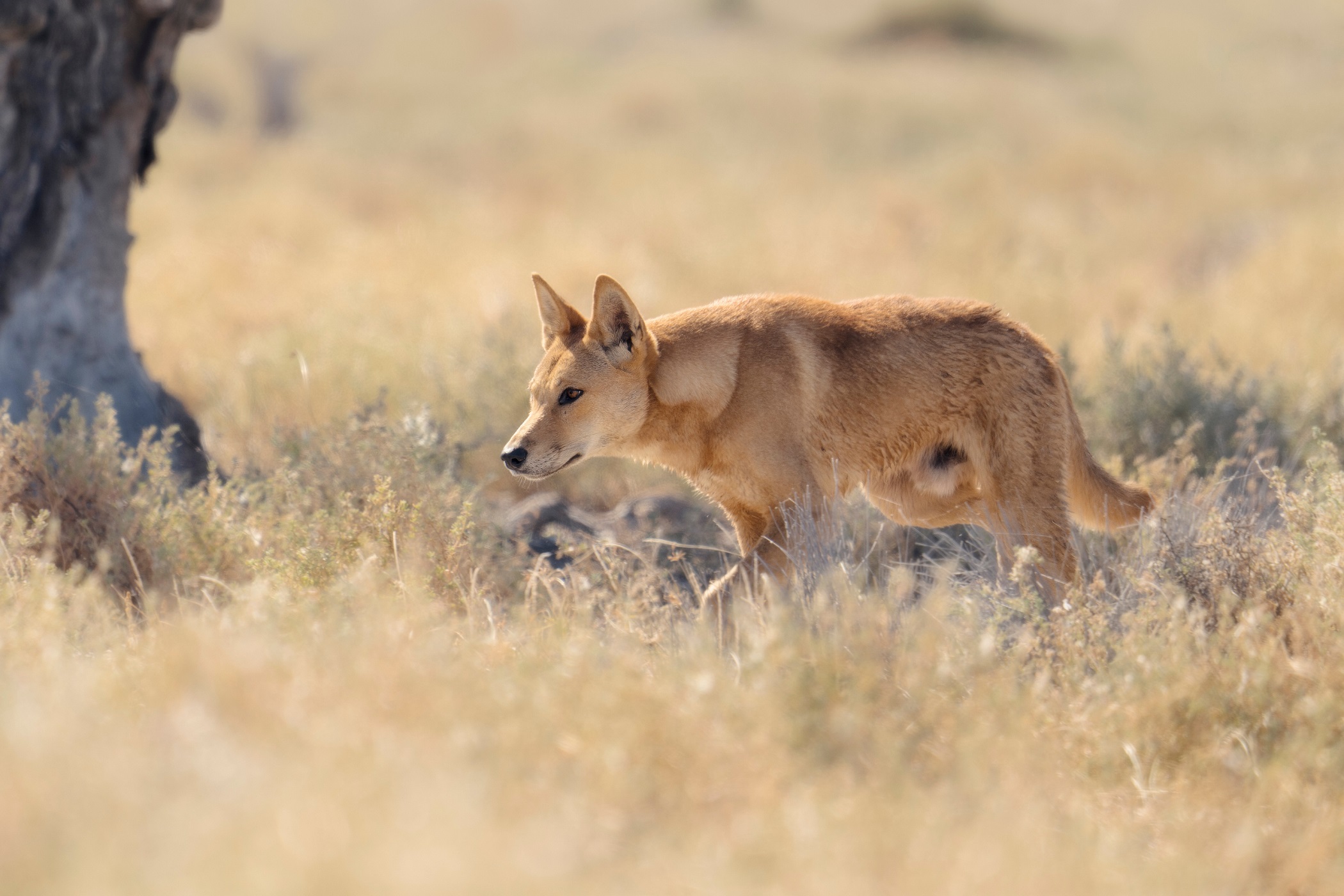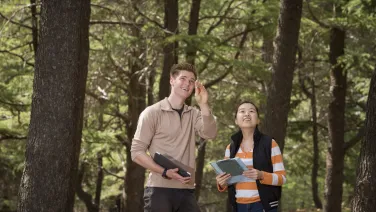
Good dog or big bad wolf?: It's time to consider the shades of grey
When a wolf slobbers all over your face, it’s bound to change you.
That’s what Pele Cannon found after spending two years at a wolf sanctuary in Colorado, studying how close encounter experiences can change our often fearful perception of wolves.
The sanctuary focuses on the wolves’ perspectives, with visitors sitting on logs literally at ‘wolf-level’ and waiting for the animals to approach, says Cannon, a PhD researcher from the ANU Fenner School of Environment and Society.
In wolf language, a sniff of another’s face and an occasional lick simply means ‘hello’.
“The older female in the group, she'd really lick if someone pulled away,” Cannon explains. “But as soon as she could sniff your teeth and look you in the eye, she'd be like, ‘alright, we said hi’ and move onto the next person.”

Not all the wolves are so gregarious. Many would steer clear and mind their own business, Cannon says. Visitors would be guided on how to respectfully interact only with the more trusting wolves in their enclosures.
“You're not just teaching the people every time you take visitors in, you're teaching the wolves as well. There's sort of co-adaptation going on,” Cannon says.
America has had a complicated history of wolf and human interactions over the past couple of hundred years. Some Americans see wolves akin to a pet dog that they could own, and others see them as threats to humans and livestock: a big bad wolf, if you will.
“We categorise things and then base our beliefs on the category that we've put it into,” Cannon explains.
“So if you think it's a dog: it's friendly, safe, and can be domesticated. If you think it's a wolf: it's unfavourable. It's wild. It's something to be feared.”
The back and forth of the laws in the US reflects these dichotomies. In some states wolves are a fully protected species, meanwhile in others, wolf hunting licences can be purchased.
Cannon sees the wolves as fitting somewhere between the two binaries: they are wild animals that aren’t suited as pets, but they also aren’t a threat that needs eradicating.
“The level of persecution of the wolves doesn't correlate with the damage they cause,” Cannon says. “There have only been a few documented cases of wolves actually killing people in America.”
“To me, it speaks to all the different ways that we have conflict over non-human life,” she adds.
Part of the sanctuary’s mission is to share the message that each wolf is a being that has thoughts and feelings, and that we have a responsibility to care for.
Cannon also notes that there are lots of parallels between wolves in the USA and dingoes in Australia, especially in the ways we categorise them.
“If we categorise dingoes as feral dogs, we then justify killing them because they're non-native ferals. But then inside national parks, they’re native species, and they're protected.”
Through her research, Cannon explored these questions about conservation management, and our responsibilities to and for non-human beings.
“I think that we can be much more explicit about the values that we are adhering to when we make these choices.”

She also wants to challenge the idea that wildness is only found ‘out there’, locked up in wilderness reserves, and mostly absent from urban environments.
We are living in a wild world already, Cannon says.
“There's a lot of scope to appreciate wildness in context and in relationship, without necessarily being in a pristine environment.
“For me, it's moving away from ideas of black and white or strict paradigms of conservation as being ‘we have to protect this thing out here from people’ or ‘we have to conserve just this species.’
“I'm interested in there being more nuance and more accountability in conservation.”
Cannon’s time at the wolf sanctuary taught her how to listen to and interpret wolf communication: like the lick-on-the-face greetings. Once you know how to listen, you can think about how to respond, and consider beyond just the human perspective.
“In 50 to 100 years, one of the things I think we might look back on and think about is the ways we have treated non-humans,” Cannon says.
“As we learn more and more about animal communication and animal capacities, the ways we treat non-humans will change.”
To further explore the ethics and morals of conservation, study a Bachelor of Environment and Sustainability.
Cover image: Pele Cannon, supplied



